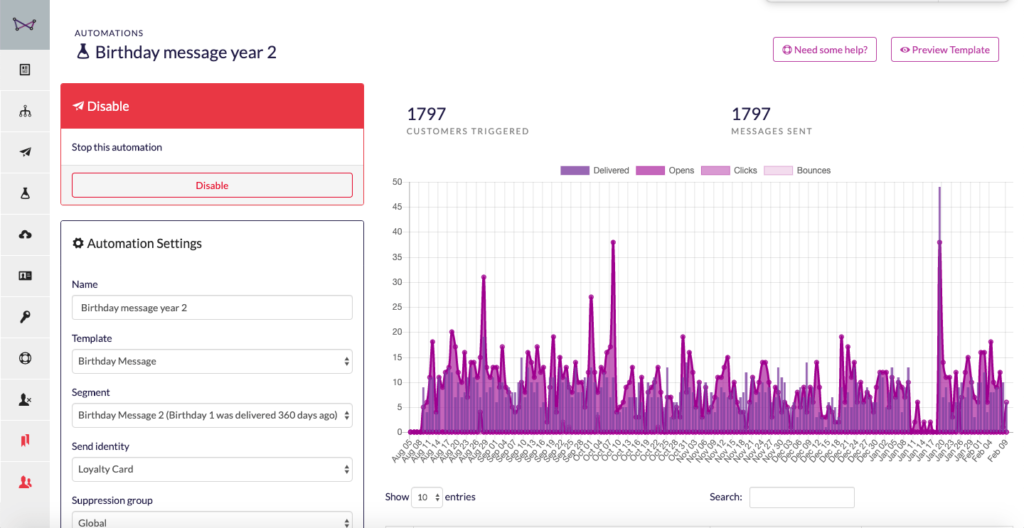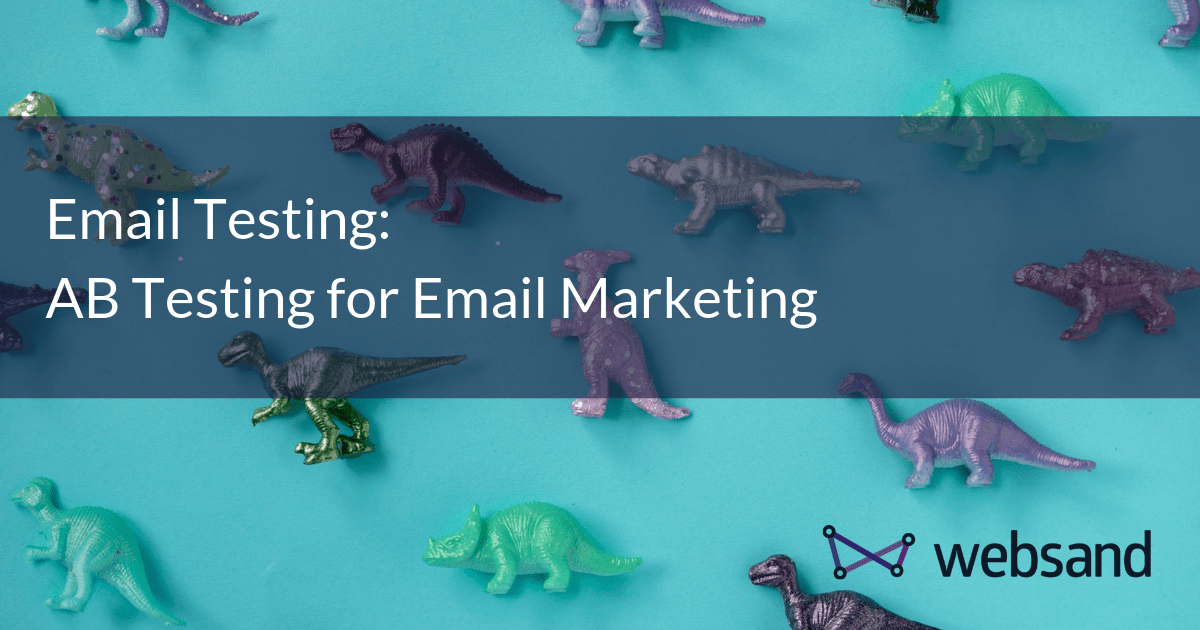Putting AB Testing in place for Email Marketing
AB testing for email marketing is a regular tactic applied by many, but in our opinion, the tactic is often misused. In this blog post we’ll investigate how you can get the best from appling AB testing in your email marketing strategy.
Hang around the marketing corner of the internet long enough and you’ll hear the phrase “AB testing”. It’s a hugely useful tactic for testing paid ads or web copy. Even the best copywriters AB test their copy. Because it’s only when your copy is ‘out in the wild’ that you can see how it performs.
You might send traffic to two versions of your sales page. Then you adopt whichever version scores the most conversions. Or run two versions of the same Facebook ad and keep the one that gets the most engagement.
Naturally, many marketers recommend AB testing your email marketing too. But should you roll out AB testing for all your email marketing? We’re going to break down what AB testing for email marketing is and if/when you should use it.
How does AB testing for email marketing work?
It’s the same basic principle. Send two options and see which performs better. But AB testing largely works on a proportional basis for emails.
Send one version of your campaign to a percentage of your email list. The alternative version goes to another percentage. Then send whichever option saw the best results to the rest of your email list.
How you determine the results depends on how you measured performance. Many marketers use open rates or click rates to judge the success of a campaign.
A common target of AB testing is email subject lines. Marketers also test the images or graphic they use. Calls to action are another testable quantity.
You can’t just try out something new, like adding emojis to your subject lines. The open rate for that email might go up compared to the previous email. But you won’t know for sure it was because of the emojis unless you have something to compare it to. Hence the need to offer two options in the same period.
For AB testing to be valuable, you also need to use the results to change something in the future. Say you AB test subject lines, one containing the recipient’s name and one without. If the personalised subject line gets more opens? Then you’d know to keep using personalisation.
What are the merits of AB testing?
You must have outcomes in mind before you start. Don’t try it because everyone says you should.
What are you going to learn from the outcome that you can apply to your next campaign? Why are you testing these elements?
If you don’t have a strategy in mind, then you’re testing for the sake of it.
AB testing can be useful when you first set up your email marketing. You won’t have much data to go on (yet) so testing which call-to-action appeals to your target audience can be useful. Or you can AB test the subject lines or content of your onboarding sequence. Try out different copy for your re-engagement emails – which one improves your churn rate?
You also need something to measure your results against. Say you use two different formulas to create email subject lines and option B gets more opens. Great – you’ve learned which of those two options performed better.
How does this compare with your usual open rate? One option will always beat the other in a test. But if neither option beat your existing measure, then you need to rethink what you’re testing – and why.
If you run several tests and none of your options beat your existing formula? Stick to what you know works.
How can you use AB testing effectively in email marketing?
In permission marketing, you send messages your customers need when they need them. AB testing relies on sending messages when you need to send them. That’s the ‘one size fits all’ email blast model of marketing.
What if the recipient didn’t need that email at that time and didn’t open it? But they go back and open it a week later? This skews the data.
When you use a platform like Websand that manages your data, AB testing loses a lot of its power. You’ve created profiles based on what customers bought or how they interacted with emails.
There’s no need to test what your audience wants. You already know.
But AB testing can still have a place. Use it to optimise elements you’ll use within an automation process.
For example. Run regular campaigns to test something significant. The two elements must be different enough to make it worth testing them. Only test one thing at a time. If you try to test two variables, you won’t know which one was more successful.
Try AB testing the following variables in your email marketing campaigns:
- Promo codes (send one with and one without).
- Copywriting formulas.
- Calls to action.
- How many links you use.
- Graphics-heavy emails vs plain-text emails.
- What time of day you send emails.
Test these elements in regular campaigns. Then bring the winners into your automated emails.
The Conversion Sciences boffins explain AB testing is valuable because it helps you predict an outcome. You can’t know how the next 100,000 visitors to your website will behave. Marketers can only predict it based on what the next 1,000 visitors do.
AB testing gives you the data you need to make these predictions.
But you’re managing your data. You don’t need to make predictions based on hypothetical visitors. You can tailor the email experience to each customer based on how they behave.
So take the AB out of testing.
We’re not saying testing is bad or that you shouldn’t do it. You should. Your business will differ from another business using the same advice. So you can’t expect the same results.
Your customers respond differently to your emails than they would to another company. Testing lets you get to the heart of how your audience reacts.
But there are better things to test than a button colour or a subject line.
Let’s say you’re a florist and you sell a special anniversary bouquet. That customer will buy it a few days before the anniversary or on the day itself. While you don’t know the exact date of the anniversary, you know roughly when it falls. Test sending an email the following year at the same time. Maybe include a special offer on anniversary bouquets. Do you get another order? Great – add this to your automation.

Anniversaries and birthdays fall all year round. So, you’ll only need to test this for a couple of months to get useful data.
Check your data to see how long your customers need your products or services. Run tests to find out how you can re-sell to them. Think of subscription businesses. They know which intervals to offer for repeat purchases based on their data.
Be smart with your testing
It’s much easier to test around things like this which link to customer retention. AB testing individual campaigns is of limited value. The outcome only matters during the duration of that campaign.
AB testing techniques for email marketing campaigns are better for short-term gains. But to be effective, but you need to concentrate on the long-term benefits. AB testing is only worth doing if the long-term benefits outweigh the short-term gains.
Don’t test for the sake of testing. Test because you want to develop a new strategy.
We’d love to know your opinions on AB testing for email marketing, what’s worked for you and what challenges you’ve faced, please let us know on the comments thread under this post.
And if you want a partner to roll out that strategy, talk to us. We’ve got GDPR compliance baked right in. And ‘data’ is our middle name.
We’re standing by!
It’s time to start getting more from your email marketing
Sign up for a free Websand demo and let’s show you how to get the best from your email marketing.

Wonderful post but I was wondering if you could write a litte more on this subject? I’d be very thankful if you could elaborate a little bit further. Bless you!